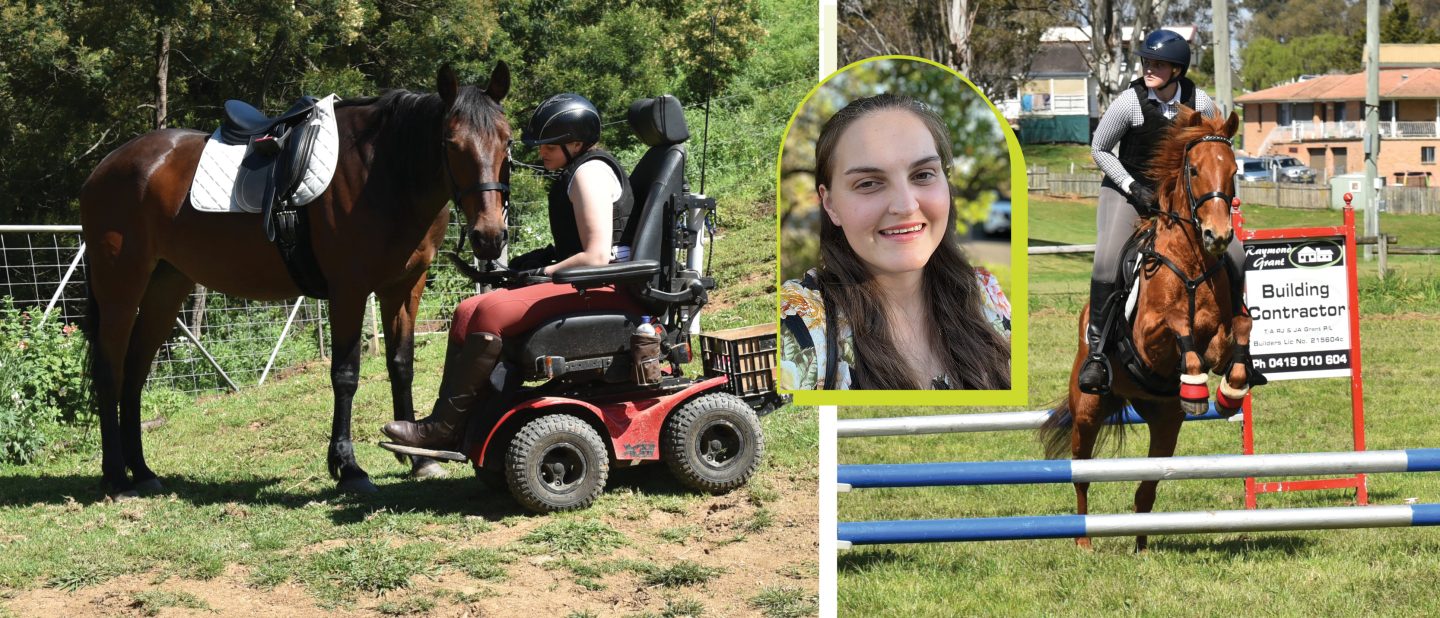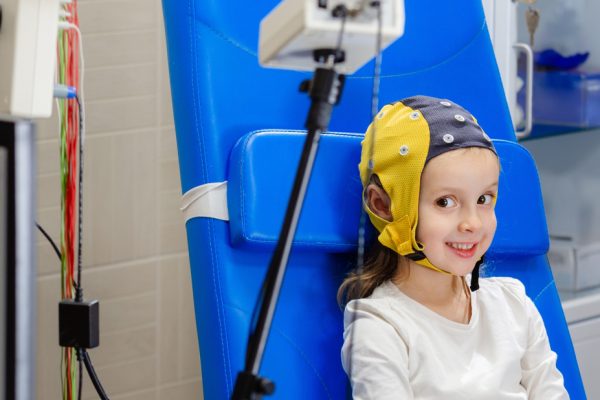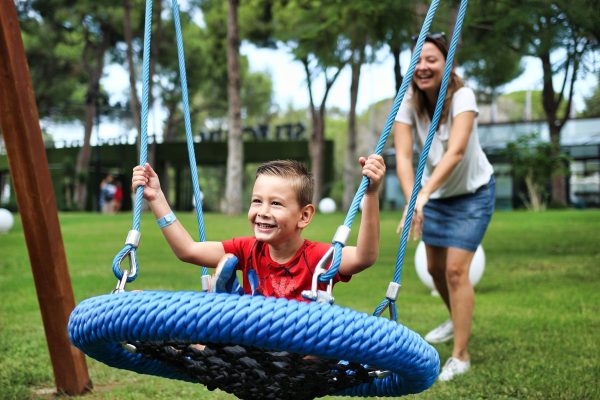
The year it all changed
By Nell Allen-Coen
She was a happy, active child, involved in pony club and gymnastics, but at age 18, when her school friends were discovering their independence, Nell was losing her ability to walk and living in chronic pain. The diagnosis – FND.
I am a 26-year-old woman from the Bega Valley on the NSW/VIC border. I h ave a love of horses and photography. Growing up I was very active, happy and healthy, until developing headaches at age 10, and some wrist pain after falls at pony club and gymnastics.
LIFE CHANGED
In 2014, life changed and not in a positive way. Trialling multiple medications with my GP to manage debilitating pain, I experienced side effects to a new medication – uncontrollable tremors in my arms and legs. This stopped after ceasing the medication, however, a week later, the severe and uncontrollable tremors restarted with the addition of tachycardia.
During a telehealth consultation with a pain management team at St Vincent’s in Sydney, my symptoms worsened and
I developed confusion, and profuse sweating. The team and my GP decided I needed to go to hospital immediately by ambulance. I thought this would only be a small bump in the road and I would return to normal in no time. Little did I know this was the beginning of a very mentally, emotionally, and physically exhausting, and traumatising few years.
Many ambulance trips to ED, hospital admissions, MRIs (one under general anaesthetic as my tremors were constant), nerve conduction studies, new medications and specialist appointments in Sydney and Melbourne. I also required regular venesections to manage my iron overload, after being diagnosed with hereditary haemochromatosis in late 2014.
DIAGNOSIS AND PTSD
After a friend suggested researching FND, I arranged a referral and subsequent appointment at the Mater Hospital, Brisbane’s FND clinic, with a neurologist who worked alongside Australia’s top FND specialist, Dr Alex Lehn. July 2017, during this appointment, I received my official diagnosis of functional neurological disorder.
My experience of the system, especially since diagnosis, has been a mixed bag. Some doctors, nurses and allied health professionals have been kind, considerate and attentive, but sadly these have been few and far between. I have been accused of being a drug addict, attention seeker, malingerer, and more. I know this is often because health staff have been ill-informed about FND and current research, however this doesn’t change the emotional distress and trauma of these experiences. Like many, I’ve been left with significant medical PTSD.
It was in 2018, my friend Natalie recommend I join the newly formed FND Australia Support Services Facebook group. Being a part of this group, I realised I was not alone in this journey. Later that year, I became a moderator on two FND Australia groups, then online support director in 2022.
Throughout the past 10 years of living with chronic illness, I’ve developed quite an interest in advocacy and peer support. Constant unpleasant interactions with the health system and government disability services have only driven my passion further.
THE REAL IMPACT OF FND
In late 2018, after three years of applying to become a NDIS participant (including a 10-month AAT process where I advocated for myself), I was finally granted access with my primary disability listed as FND. Through the NDIS, I continue to access the assistance required to live as full a life as possible.
FND has had a significant impact on my life, including my mobility. Early on in my journey, around age 18, when my friends were graduating high school and exploring their new found independence, I lost all strength in my legs and became bed and wheelchair bound, completely reliant on my father for almost everything, including accessing the toilet and bathroom. I was unable to weight bear and was experiencing severe and frequent arm tremors and jerking movements. This meant even the simplest task of feeding, or washing myself became an exhausting effort. Going from being independent to totally reliant on others, took a huge toll on me and my family. My father became my full-time carer, while also trying to run the household and take care of our animals. My mum, in the middle of her social work studies at the time, found it devastating to see her young adult daughter requiring everyday support. This diagnosis doesn’t just impact the individual, but their entire family and support network.
Today, I’m an ambulatory wheelchair user – manual or electric depending on the day, symptoms and terrain – and at times, use Canadian forearm crutches to mobilise. Thankfully I still hold a full unrestricted driver’s licence, reviewed annually with a medical. But sometimes I choose not to drive due to FND.
SERVICES AND SUPPORT
I access numerous government supports and services including NDIS, Disability Support Pension, Disability Parking Permit, Mental Health Treatment Plan and GP Care Plan. Support workers come daily to help me shower (wash my hair), change bed linen, do my washing, dishes and meal prep, and a cleaner comes weekly. With NDIS assistance, I access therapies to help me manage day-to-day, including myotherapy, podiatry and psychology, also engaging an OT, for home mods and assistive technology reports.
I still experience brain fog, migraines and complex regional pain syndrome (CRPS) which has made study almost impossible. Although, I’m hopeful that after treatment for CRPS, I’ll be able to return to my Cert IV in Mental Health Peer Support and get my qualification, which will lead to meaningful paid employment. I look forward to a future of endless opportunities.






